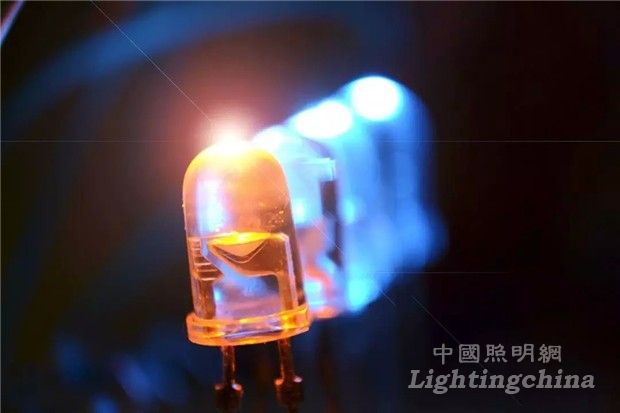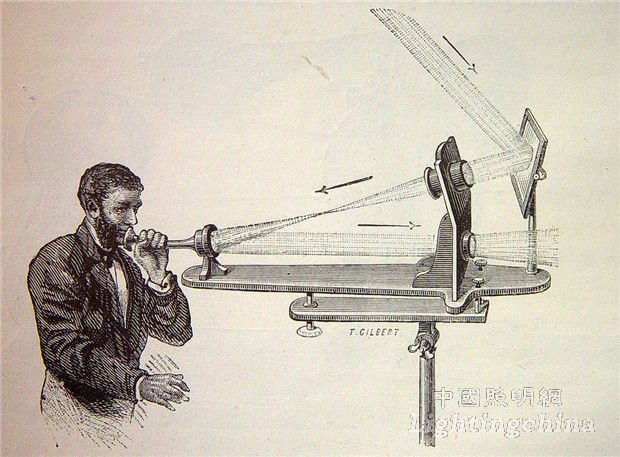
Privacy statement: Your privacy is very important to Us. Our company promises not to disclose your personal information to any external company with out your explicit permission.

With the lights on, the phone can have power to make calls and go online, which sounds cool, but this advanced technology has always happened in the lab environment. For ordinary people, how long does the project go out of the lab? What changes will happen to our lives?
Dr. Shen Guobin from Microsoft Research Institute first made research on indoor positioning. In 2012, he began to study visible light communication, which is how indoor light source determines the position of people. Last year, his team won the global indoor positioning competition IPSN. Two.
How does light transmit information?
As early as 2004, there were papers in the IEEE magazine explaining how to provide wireless network connections through LEDs (ie, LED tubes). The specific principle is this:
The LED lamp is originally a semiconductor chip. Unlike the traditional filament, the chip can be switched on and off very quickly. For example, the AC lamp is 60 Hz, and the human eye cannot recognize the flashing of the light. When it is turned on and off, there is a square wave of light. After modulation, information can be transmitted, which is no different from the radio communication of the telephone we usually use.
At present, many universities around the world have related research projects, most of them are in the laboratory. In 2012, the communications industry magazine IEEE published a paper on the transmission rate of visible light to 96Mb / s. By the end of 2013, the laboratory of Shanghai Fudan University has been able to let a light LED lamp with a power of 1W, and provide 4 computers under the light to access the Internet. The maximum speed can reach 3.25Gbp per second, and the average Internet access rate reaches 150Mb per second. .

Microsoft Research has also done research in this area. And the lab will try to pull the peak-to-device transmission rate to the peak limit. I want to study the possibility of this technology on ordinary electronic devices, so his team bought a cheap LCD panel in Taobao. Blocks of solar panels, boards and can be tested.
At present, Shen Guobin's team has studied how to use Retro-Reflector, which is actually a kind of mirror, which reflects the original light path back to the LED light, forming a mutual communication between the LED and the electronic device. They have been able to achieve a downlink speed of 10 kb/s from the light to the device at a switching frequency of 1 megahertz, and an upward speed of 0.5 kb/s from the device.
At Microsoft's Asia R&D Center, we saw this experimental product made of inexpensive components: no charging cable, no Wi-Fi signal, only a similar phone size with LCD screens, mirrors and solar panels. device of. Light flashing the LED bulb, the device lights up and begins to transfer data. LED lights have become a source of energy and information for a common device.
Intelligent traffic signs, IoT devices that don't need to be charged, try to imagine a scene where the lights illuminate the roadside signs and the road signs can immediately transmit the nearby road conditions to the car navigator, telling you the most smooth road to the destination; When you turn on the light, the air detector will tell you how the air quality, temperature and humidity are outside, and the monitor's display is always on the bed, no need to charge, and no need to connect Wi-Fi or Bluetooth. .

Dr. Shen Guobin from Microsoft Research Institute said that intelligent road signs and IoT devices that do not need to be charged may be what they think of the future of visible light communication. It sounds beautiful, but it is still in the theoretical stage. "Our first thought is to go and discuss with the product department to see if this thing can be put into Microsoft's big product blueprint. Whether it is our design or our thoughts, as long as they can accept it, we will very happy."
However, it is not easy to achieve these. It is necessary to introduce a modified LED lamp, and it is also necessary to introduce an electronic product with a reverse transmitter and sell it to the market at the same time. For a company, there are too many relevant teams that need to cooperate from technology to product.
How far is the distance between research and products?
In 1880, the Canadian inventor Alexander Bell discovered an interesting way of playing: by adjusting the beam changes and transmitting the voice signal, wireless conversations between the two sides can be made - this is the first time humans have implemented wireless phones, using visible light communication. When Bell applied for a patent for this invention, even the power did not appear. He also believed that this "optical phone" had no practical value.

In fact, no matter what research project, the product department is still dominant in a company that makes products. When the product department has some problems to be solved, the technology developed according to this technology can be quickly used on the product. When there is no related product plan, it is very difficult to convert the basic research results into products.
"In this case, the mission of the institute is to let these cool technologies know the product department through papers or internal demos, and hope that they will consider this technology when they next make product plans." Shen Guobin said.
Edit: Bober
Mail an Lieferanten

Privacy statement: Your privacy is very important to Us. Our company promises not to disclose your personal information to any external company with out your explicit permission.

Fill in more information so that we can get in touch with you faster
Privacy statement: Your privacy is very important to Us. Our company promises not to disclose your personal information to any external company with out your explicit permission.